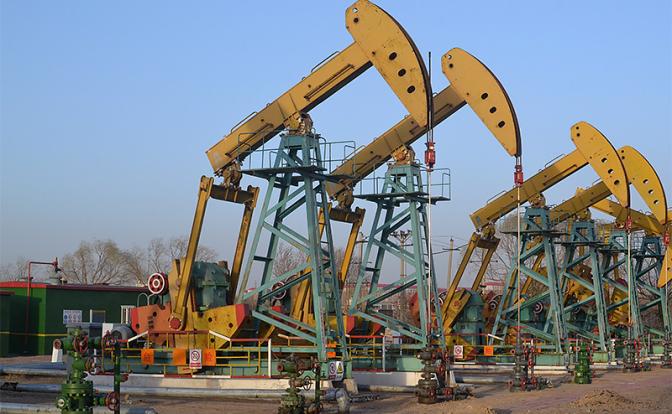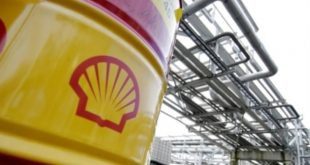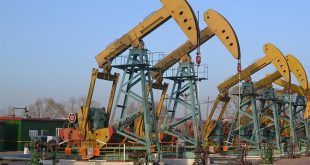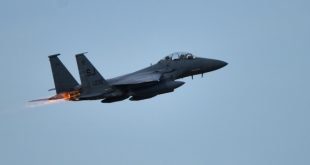
Magical the price of oil and will save the Russian budget and ruble
The collapse of talks in Doha in mid-April, has not led to a collapse in oil prices, as a month ago many analysts were expecting. On the contrary, the black gold after a brief slide, went up, and I think I found a new point of balance is above $ 45 per barrel. Now experts believe that this is not the limit and the value inherent in the Russian budget — $ 50 per barrel of Urals (it is the so-called magic price of oil) — is not far off.
Turning point
During the trading session on may 11 the price of Brent crude on the ICE stock exchange in London has jumped to almost $ 48 per barrel. May 12, mark has been broken. For the third week prices hold around $ 45 or higher. In January and February, when the question was about whether to stop a drop of 30 dollars per barrel, and imagine nobody could. Business publications and financial reports, and industry organizations then were filled with pessimism predicted a drop to 25, 20 and even $ 10, just like in the late 90s.
Now the predictions are quite different. Business as usual, analysts are people too, and in an area such as the world oil market, the new circumstances are revealed daily. Anyway, the US Department of energy predicts the average price for Brent crude in 2016 at 41 dollars per barrel. Given the extremely low quotations in the first quarter of this means that before the end of the year oil prices will stay around $ 45, and can be, and will rise above $ 50.
Further, the oil reaches the so-called magic prices — under which mining companies operate without losses, and the state dependent on energy exports, is living without a budget deficit.
World growth
Why did this happen? After the failure of negotiations in Doha you would expect a strong decline, but by and large there wasn’t even a temporary rollback for $ 7-8. Although, for example, Saudi Arabia, which many accused of non-constructive position in the Qatari meeting, made some demonstrative steps on the “getting rid of oil dependency”, as if waiting for extremely unfavorable situation on the market in the coming years.
Judging from the data provided by the main producers in OPEC, member States of the organization, to reduce the volume of production and exports do not intend to. Iran in April reached the level of production corresponding to November 2011, that is, just as before the imposition of sanctions. Growing production volumes in Iraq (despite the civil war that seems to have no end or edge) and the UAE. Saudi Arabia can withstand close to record levels above 10 million barrels per day.

Russian energy Minister Alexander Novak (center) didn’t expect that the negotiations with the oil producers will fail. However, oil becomes more expensive and without locking the production
Photo: Jon Gambrell / AP
But other manufacturers are not so perfect. Extremely low prices stronger impact on the shale industry in the United States. At the end of the first week of may production in the country fell to 8.8 million barrels a day — 10 percent from the peak reached in mid-summer of last year. Continues to work only a fifth of the drill. This indicator is “leading”, that is, in real production it will be reflected some time later, when the workers of the towers will dry out. But now the recession is felt strongly.
In America they say that for the normal operation of the oil industry needs prices consistently above $ 50 per barrel. Then most manufacturers will be able to recapture the invested funds and even have a small profit. While the price of oil is not located in a “comfortable” range, production will continue to fall.
Generally, the problems arise primarily from projects with expensive, hard-to-recover oil. Drop significantly in the US more than anywhere else, because the shale deposits are fairly flexible in terms of operation. The production of, say, offshore oil or hydrocarbons in remote polar regions don’t just stop. But you can stop investing in exploration and development of already explored fields — then the collapse of production will happen later, but with the same inexorability. And most of the major oil companies for some time now been adjusted (downward, of course) of the investment extremely quickly.
On the other hand, the demand for oil still growing, although slower and weaker than expected. So, the same gap between production and consumption that caused the collapse of the prices have been gradually declining. Exact figures here are difficult to call, but a sharp drop in industrial stocks in the U.S. by 3.4 million barrels (this was not long ago) gives an idea of what is happening on the markets processes.

On 12 may, the Brent price has exceeded $ 48 per barrel
Photo: Kai Pfaffenbach / Reuters
It is also the fact that low oil prices since the autumn of of 2014 did a disservice to the alternative energy sources that were, so to speak, in the trend. When cheap hydrocarbons, even with the available subsidies, much reason to invest in green energy, no. US Department of energy on may 12 issued a report that predicts preservation of oil as the Premier energy source in the world in the next 25 years. It seems to be any miracles, however, very symptomatic.
Cheap euros and rubles
It is worth noting that the collapse of world oil prices in the last year and a half would be much less impressive if it were to be measured in euros or some other currencies. Considerable role in this was played by the sharp strengthening of the dollar. Euro since the autumn of of 2014 fell against the U.S. dollar by 18 percent. And, apparently, supercheap Euro will last longer than cheap oil. In the global economy remains uncertain, does not inspire much optimism, which means that the investors will keep money in “safe haven”, which now seems the dollar and U.S. government bonds.
For example, the investment Bank Goldman Sachs expects the next two years, the strengthening of the dollar by 15 percent against the Euro compared to current levels. The reason — more the tight monetary policy of the fed compared to the ECB, as well as the deteriorating financial and economic situation in the world. In this scenario, the parity between the two main global currencies is possible in a very short time.
What this means for the ruble? The Russian monetary unit is sensitive just to the two aforementioned factors. Expensive dollar is pushing the ruble down (even against the Euro and other currencies), and high oil prices — up. The result of these two countervailing forces — “sideways”. For example, analysts polled by Reuters, predicted the Russian currency growth up to 63.5 rubles per dollar by the end of the year, which is approximately 2 percent higher than current levels. In ROSBANK expect the level of 65 rubles per dollar.
However, there is a third factor affecting exchange rates in Russia, namely, the policy of the Central Bank. If the Central Bank does decide to lower the rate in order to maintain economic growth, then the Russian currency will inevitably subside. But serious grounds for that yet. The controller is extremely cautious approach to monetary policy and, barring some force majeure, will be the last to defend the current status quo. Which means a very slow and careful rate cut and more or less stable exchange rate.







